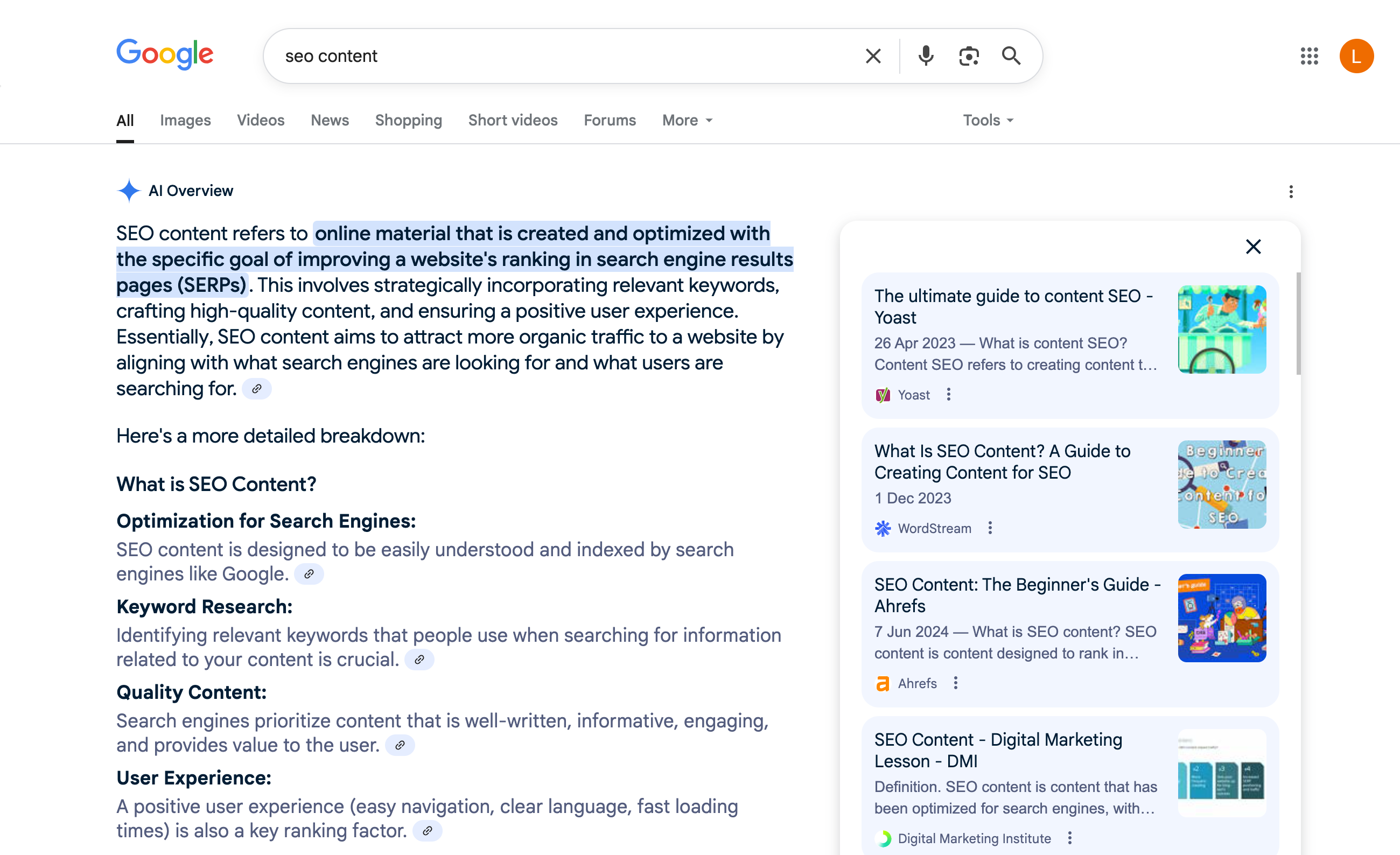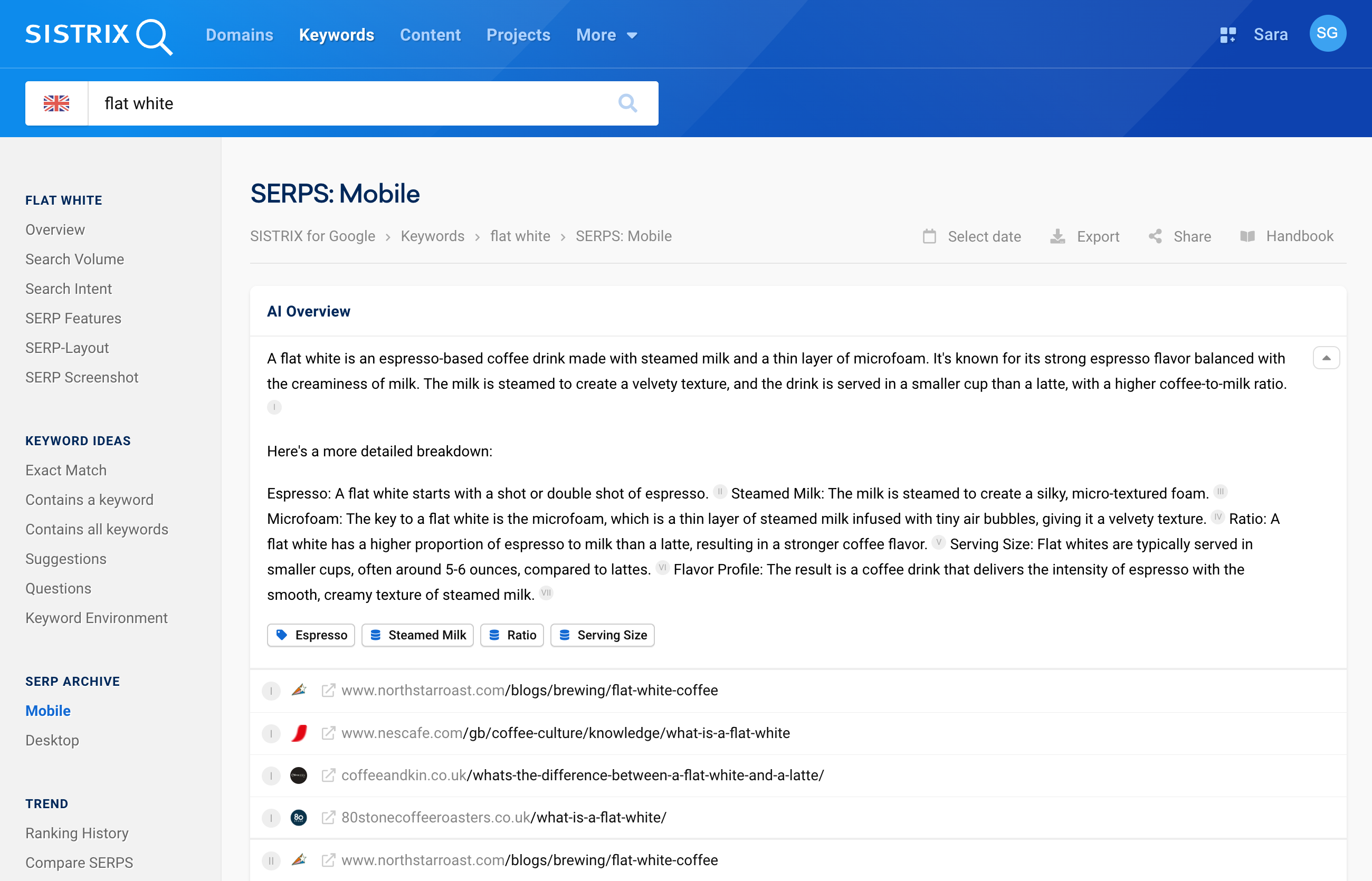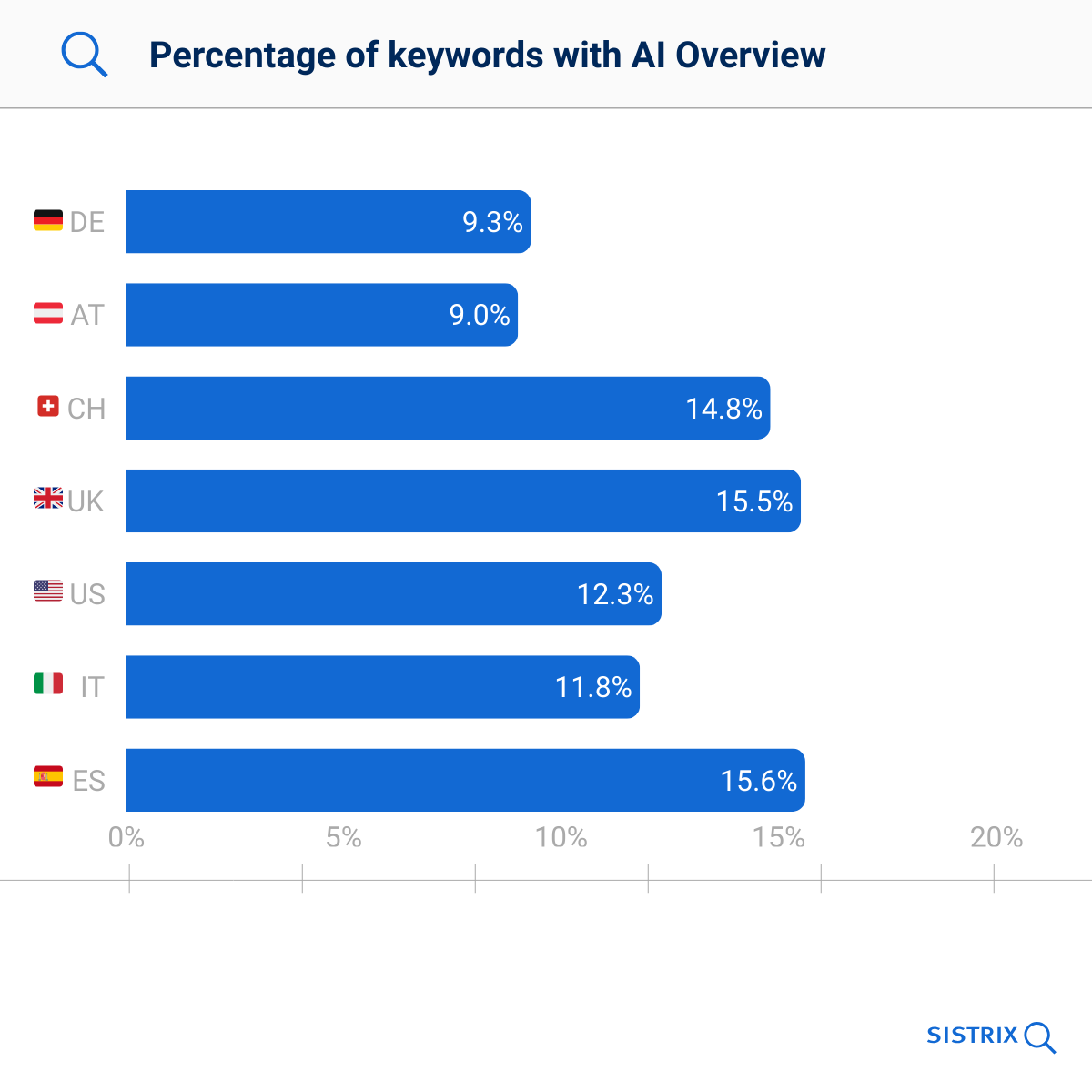The introduction of Google AI Overviews marks the beginning of a new era of search – and visibility on the web. Instead of the classic list of ten blue links, Google is increasingly showing automatically generated blocks of text compiled from various sources above the organic search results. For SEO, this means that in the future, visibility will not only depend on rankings but also on citations in these AI-generated responses.
- Track AI Overviews with SISTRIX
- SEO in the age of AI Overviews
- In terms of content
- Technical aspects
- Monitoring
- How widespread are AI overviews in search results now?
- What impact do AI overviews have on traffic?
- Legal questions: Is Google allowed to generate automatic summaries?
- Conclusion: SEO is becoming more dynamic - and more data-driven
AI Overviews are generative answers that Google displays directly in the search results. They are based on content from the web, the Google Knowledge Graph and other structured data. Users receive an immediate answer to their question – including a link to the sources used. The AI Overviews are primarily displayed for search queries with the search intent “information”. When searching for products, Google does not display AI answers, but Google adverts – after all, Google itself wants to earn money.

Google’s AI Overviews usually take up the entire visible area of the browser and can be folded out so that the organic search results become virtually invisible.
The links displayed usually do not lead to home pages, but to very specific, thematically relevant subpages. This makes a sophisticated SEO strategy with extensive and detailed content more important than ever.
Track AI Overviews with SISTRIX
AI Overviews are now visible across the board in the UK. These generative responses can be specifically analysed in SISTRIX – including the domains that are mentioned in them.
A blue AI icon can be seen in the keyword table for matching hits. The SERP features filter can be used to restrict the keywords for which an AI overview is displayed. The additional option “Is also ranking” can also be used to recognise whether a domain is named as a source within the AI panel.

In the navigation on the left-hand side there is also the “AI Overviews” option, which can be used to open up a central overview of all keywords for which the analysed domain is cited in a generative response – including the position within the response box, search volume and organic ranking.

Another new feature is the option to analyse AI overviews in the SERP archive directly – regardless of a specific domain. The full text of the AI response is displayed there. This includes all cited sources, recognised entities and the corresponding SERP display. This means that content, source references and the thematic structure of the AI Overviews can be tracked in detail and analysed for your own content strategies.

Discover how SISTRIX can be used to improve your search marketing. 14 day free, no-commitment trial with all data and tools: Test SISTRIX for free
SEO in the age of AI Overviews
In traditional search results, visibility in the top 10 is what counts. However, in AI overviews, the accuracy of the content is decisive. Content that recognises the needs of users and answers their questions as precisely as possible is therefore rewarded.
Our analysis shows: the proportion of search queries with AI overviews is continuously increasing and most recently stood at 18 per cent in the UK. Pages with particular authority for a specific topic are displayed with a noticeably frequency, but these do not necessarily have to have top Google positions.
The basic principles of good SEO work also apply to AI optimisation, especially if you adhere to Google’s E-E-A-T and produce helpful content that contains your own experience and expertise and is trustworthy.
In the future, the aim is to cover as many questions on a topic as possible that users enter into Google. However, this has long been a prerequisite for appearing in organic searches. Short definitions or glossary texts will become less important because Google will subsequently answer them directly and won’t need any other sources.
In terms of content
- Clear, direct answers to questions (“What is…”, “How does…”)
- Structured step-by-step explanations
- Integrate relevant use cases and own experiences
- Semantic depth instead of keyword stuffing
Technical aspects
- Expand internal linking to thematically focussed subpages
- Targeted use of structured data (e.g. FAQ page, HowTo)
- Ensure crawlability and indexing
Monitoring
- Regularly check which pages are cited – and which are no longer cited
- Update content regularly
- Competitive comparison: What content from other domains is used?
How widespread are AI overviews in search results now?

Since the end of 2024, Google has been widely displaying AI Overviews in the UK, with such generative response fields now appearing for nearly one in four keywords. This places the UK among the leading countries in terms of AI Overview visibility. In comparison, Spain sees these overviews for just over 15 percent of keywords, while Germany lags behind with around 9 percent. Austria has the lowest visibility rate overall.
What impact do AI overviews have on traffic?
The key question remains how AI Overviews affect click-through rates. Previous data from the UK indicates that the click rate on position 1 is higher on average with AI overviews than with classic Featured Snippets. At the same time, the growing visibility increases the concern that more and more search queries will be answered directly in the AI – without users clicking any further.
Google does not yet separate out AI Overview impressions in the Search Console, which makes it difficult to carry out a concrete analysis. At the same time, there are many indications that the search ecosystem is currently undergoing fundamental changes. Google is sourcing more and more content directly from forums such as Reddit, while many traditional publishers are increasingly worried about their visibility and reach.
Whether AI Overviews will lead to fewer visitors to external websites in the long term cannot yet be said conclusively. What is clear, however, is that generative search is changing the rules of the game – and the interplay between content and visibility is being redefined.
Legal questions: Is Google allowed to generate automatic summaries?
The introduction of Google’s AI Overviews has triggered considerable criticism and initial complaints worldwide. The new function automatically generates summaries of content from various sources and presents them directly in the search results. This could provide users with the information they need without having to visit the original websites, potentially leading to a drop in traffic for the sites concerned. The AI answers are labelled “Generative AI is experimental”. Responsibility for the accuracy of the information is outsourced to the site operators via a source link.
Publishers and content producers argue that Google is profiting from their content in this way without providing adequate compensation and thus crossing a line. Current calls by Sam Altman of OpenAI to release content for the “training” of AI as “fair use” and thus practically abolish copyright emphasise the political dimension of these issues.
These developments raise important questions about the fairness and transparency of the use of copyright-protected content by AI systems. There are concerns that such practices could undermine the economic basis of authors and publishers. The legal situation is already changing as a result of the EU AI Act, and it remains to be seen how courts and legislators will respond to these new challenges.
Conclusion: SEO is becoming more dynamic – and more data-driven
Google’s AI Overviews are changing SEO permanently. Visibility in Google no longer just means a good ranking, but the ability to convince with your own content in the right depth and structure. It remains to be seen whether this content will still get enough clicks in future if Google displays it directly in the search results without rewarding websites with reach. Additionally, time will tell whether it is legal to utilise third-party content without consent and compensation.
Test SISTRIX for Free
- Free 14-day test account
- Non-binding. No termination necessary
- Personalised on-boarding with experts